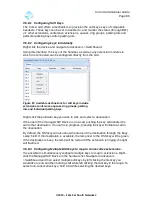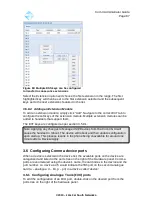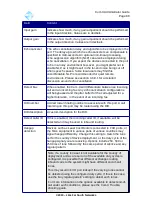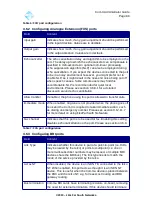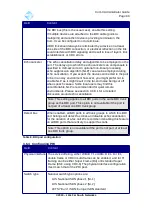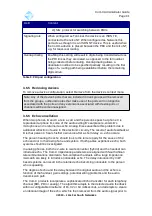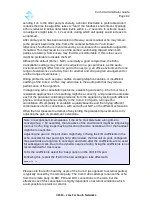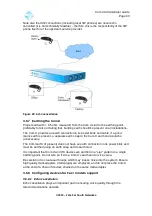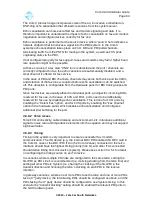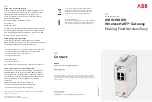
Com.X Administrator Guide
Page 92
sending it on to the other party. Generally, a shorter timeframe is preferable since it
reduces the time the algorithm takes to “learn” the feedback environment. Typically,
echo is reduced to below detectable levels within 1 – 2 seconds. In extreme cases
convergence might take 3 – 12 seconds, during which call quality would increase to
an optimum.
After primary echo has been canceled in this way, some residual echo may remain
(echo present beyond the time-frame the canceler buffered or “non-linear”
reflections). Such echo is then removed by a non-linear echo cancellation algorithm,
if enabled. This may result in one of the parties' audio being clipped when both
parties are talking. Some users may find this uncomfortable. If this is the case it
might be preferable to disable the NLP.
Although the default (16ms + NLP) is normally a good compromise, the Echo
Cancellation settings may need to be adjusted on a per-port basis, as the audio
environment might differ from one port to the next (e.g. an office environment for one
range of extensions vs a factory floor for another and an open plan arrangement for
another range of extensions.)
Wiring problems, such as power cables crossing telephone cables, or insufficient
earthing of the Com.X or iTAs may add noise to the audio path that may reduce
performance of the algorithm.
In diagnosing echo cancellation problems, establish good earth (~0.5 ohm or less, if
resistance approaches 1 ohm earthing might be a concern), and proceed to eliminate
each of the potential contributing elements from the equation by testing with different
phones, connecting phones directly to the Com.X FXS ports, turning echo
cancellation off completely to establish a quality baseline and then trying different
combinations of echo cancellation, with and without NLP, on the different extensions.
Often the first measure to attempt, often yielding the greatest improvement is to try
adjusting the gain on problematic extensions.
Note: In exceptional circumstances, if the echo cancelers take a long time to
converge (e.g. > 10 seconds), the acoustics of the environment might be introducing
too much echo, long loops may be present in the telco network and / or the handset
might be too sensitive.
Adjusting the gain on the port down might help, or fixing the FIR coefficients in the
echo canceler for that port might help. After restart, the first call on ports configured
thus would take a long time to converge, and there-after the coefficients are re-used
for subsequent calls. Due to the dynamic nature of echo, fixing the coefficients is not
recommended for most cases.
To fix the coefficients select the 'Keep' option on the FXO/FXS port.
Following this, restart the iTA for the new settings to take effect with:
commals r
Please note that echo heard by users of the Com.X (as opposed to external parties)
is typically caused by the remote party. The Com.X does attempt to cancel the echo
from the remote party on BRI, PRI and FXO connections to the telco, but the
effectiveness of this cancellation is highly dependent on external conditions which
are impossible to predict or control.
©2010 –
2016
Far South Networks
Содержание Com.X
Страница 34: ...Com X Administrator Guide Page 34 Figure 26 Global Settings 2010 2016 Far South Networks ...
Страница 99: ...Com X Administrator Guide Page 99 3 7 4 2 Advanced configuration 2010 2016 Far South Networks ...
Страница 110: ...Com X Administrator Guide Page 110 Figure 92 SIP trunk basic configuration options 2010 2016 Far South Networks ...









